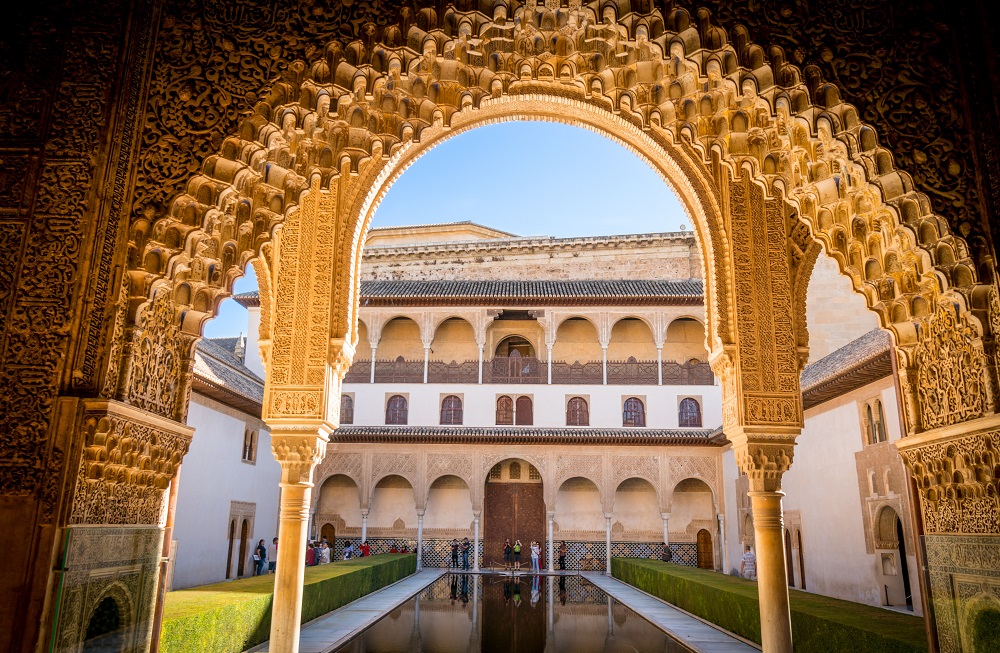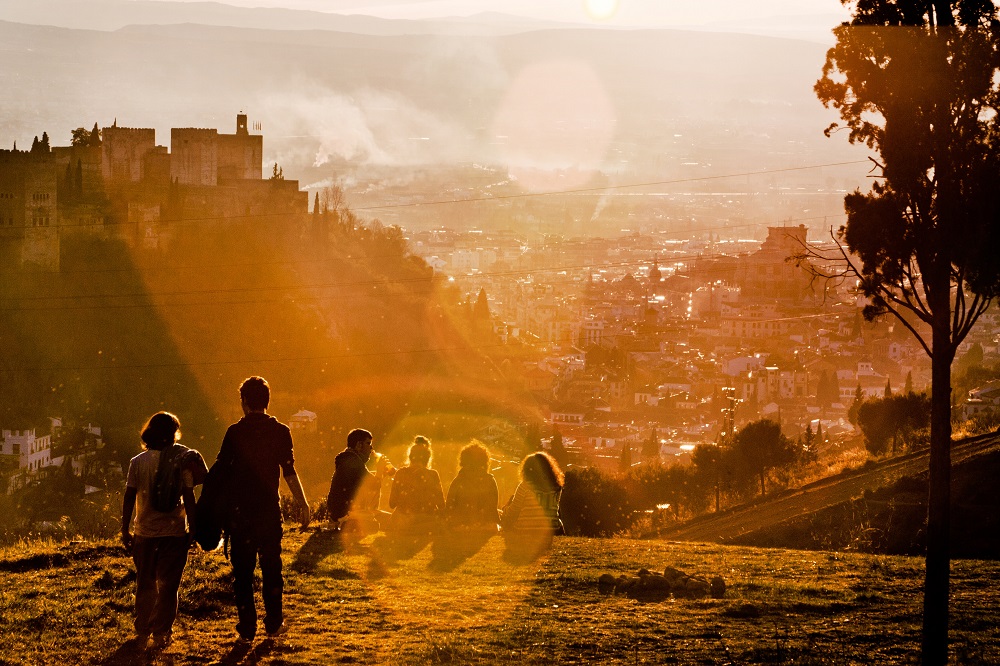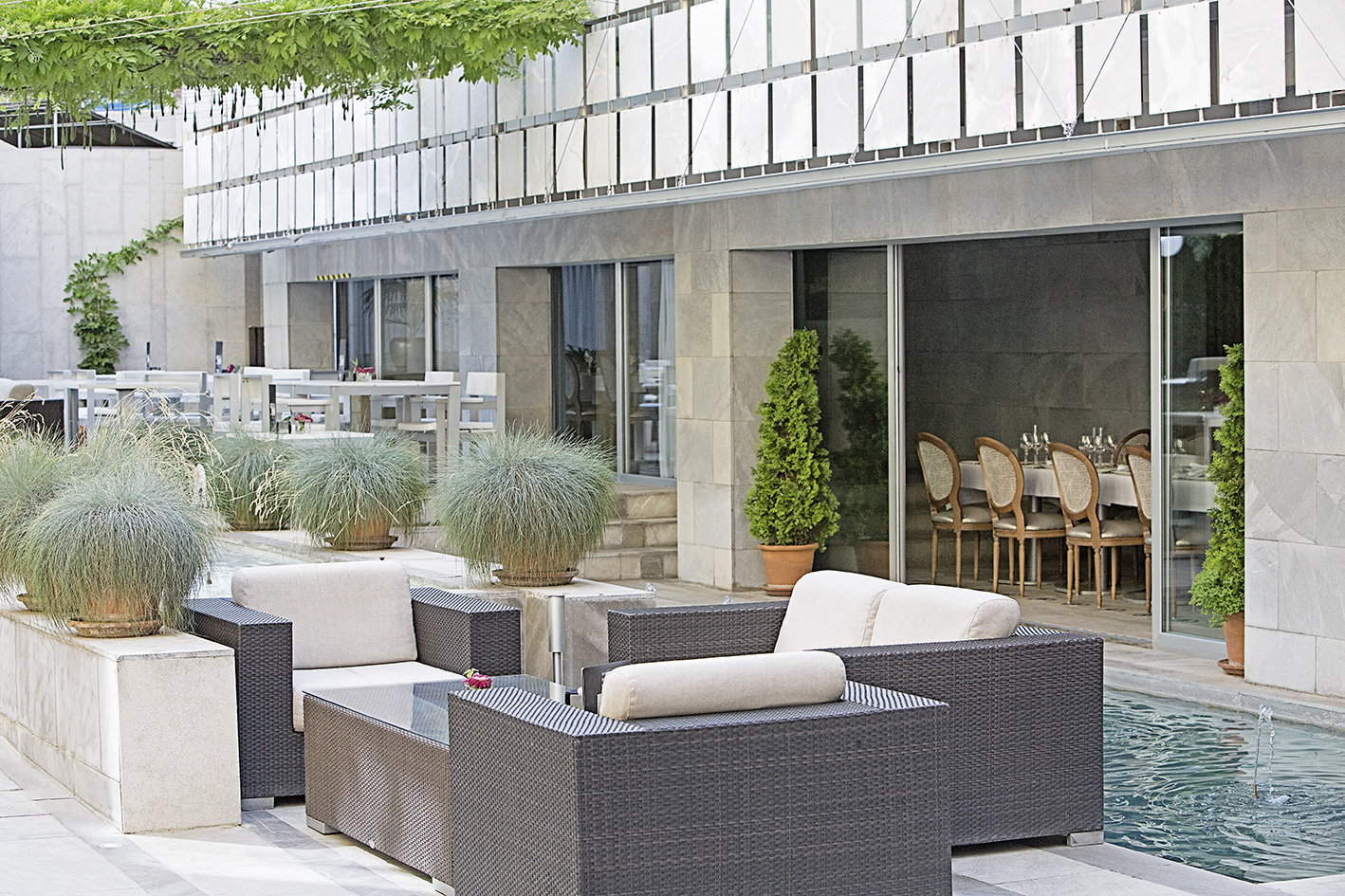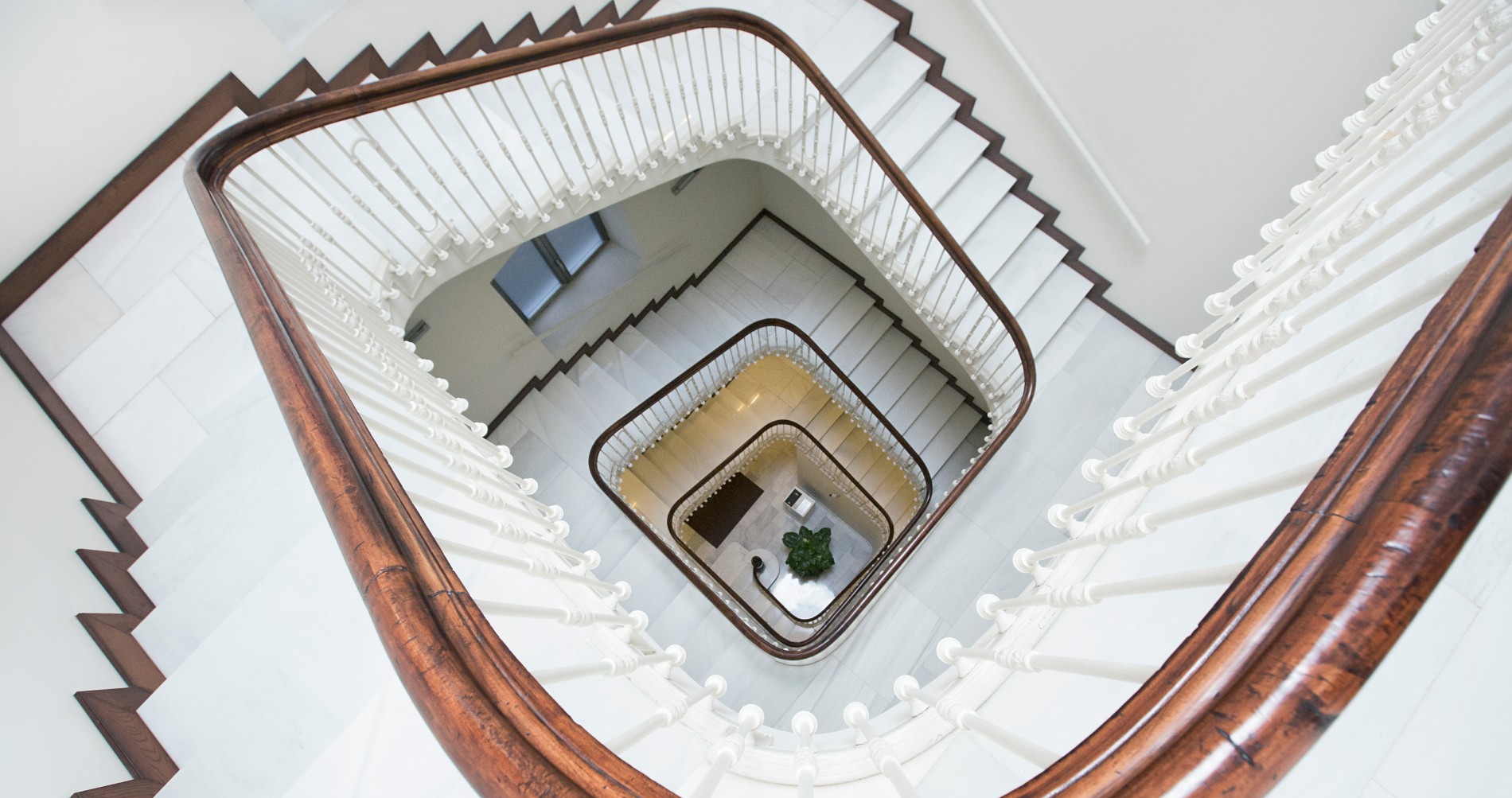Granada. Must see, visit and experience
Granada is a city that will captivate all your senses: your sense of sight with its impressive monuments such as the Alhambra, the Cathedral and the stunning landscapes seen from the viewpoint of San Nicolás; your sense of smell with its jasmine blossom scented streets in the Albaicín district; your sense of hearing with the flamenco celebrations of the Sacromonte; your sense of touch when you cast your hand over the ancient stones of the buildings; your sense of taste when you try the delicious local dishes. Granada is a city of kings, which has to be experienced.
In addition to the provincial capital and the region of Granada, there are a number of towns historically linked to the city of the Alhambra. These towns share its rich heritage and are located in the town’s so-called green belt, surrounded by carefully tended gardens and green spaces. Some municipalities have played a crucial role in world history and culture, such as Santa Fe, a town created by the Catholic Kings to besiege Granada and where the Capitulations for the discovery of the Americas were signed by Christopher Columbus. Another example is Fuente Vaqueros, the birthplace of Federico García Lorca, one of the most important Spanish poets and playwrights.
the Alhambra
The Alhambra was officially declared a World Heritage Site in 1984. Its name comes from the Arabic name for the colour of its walls (Al-Hamra), which were made using local clay, giving the bricks a reddish tint.

A visit to the complex takes at least three hours. It is located on the Sabika hill, near the Darro river. Most of it is made up of the Generalife gardens, the Nasrid Palaces and the Alcazaba, built by the Arabs. Of Christian origin are the Palacio de Carlos V and the Iglesia de María, built on the site of a former mosque. The Nasrid Palaces are grouped irregularly and the different chambers are connected by courtyards or galleries.
Opening times:
April 1st through October 14th:
Days for visit: Monday to Sunday
Hour ticket office: 08.00–20.00
Visit hour: 8:30 – 20:00
October 15th through March 31th:
Days for visit: Monday to Sunday
Hour ticket office: 08.00–18.00
Visit hour: 8.00 – 18:30
Tickets must be bought at least three months in advance.
How to get your tickets?
- You can buy the tickets directly yourself through the website: https://tickets.alhambra-patronato.es/.
- Our concierge desk can book a guided tour within a group of about 25 people. The price is 59€ +21%VAT per person and includes the transportation (from and to the hotel in a mini bus), the guided tour in English and the tickets.
- Our concierge desk can book a private tour for you and your family; the package includes transportation, private guide in your own language and the tickets for all the different parts of the Alhambra. The price would be from: 330€ +21% VAT for 2 persons.
Albaicín Quarter
The Albaicín quarter was declared a World Heritage Site in 1984. It is the original core of the town of Granada and still maintains the captivating magic of its Moorish past. During the Moorish occupation, the Albaicín quarter was made up of a group of different independent town centers and it was not until the modern period when it was considered a district as a whole.
A tour of the Albaicín
- Puerta de Elvira: Only the arch remains of the Puerta de Elvira. It is located at the foot of the hill and was the former entrance to the city of Granada. Today it is the perfect starting point to visit the district. Below lies the Plaza de San Gil, which was known as the Plaza de Hatabin or Plaza de los Leñadores during the time of the Moorish occupation. It was a hive of activity during this period, as it was a meeting point between the city and the outskirts and the medinas on the opposite bank of the Río Darro.
- Carrera del Darro y Paseo de los Tristes: La Carrera del Darro leads to the Paseo de los Tristes, another typical part of the Albaicín quarter. This is where the Cuesta del Chapiz hill begins its steep ascent leading you to the Sacromonte district. On the Cuesta del Chapiz hill you must stop to admire the splendid Casa Morisca, or the Palacio de los Córdova, based on a 16th-century building that was reconstructed on the same site in the 1960’s. Today it houses the Municipal Archives.
Abadía del Sacromonte

It was commissioned by the Jesuit Archbishop of Granada Pedro de Castro Cabeza de Vaca y Quiñones to the Jesuit architect Pedro Sánchez. The courtyard is a particular highlight of the building with galleries decorated with Tuscan columns on all of its four sides.
The church is dedicated to the Virgin of the Assumption. The initial floor plans consisted of a nave with a chancel at the end. It was extended in the 18th century, in the shape of a Latin cross, with three naves, a chancel, a transept and a choir.
How to get there: Bus C2.
Opening times:
May 1st through September 30th:
Monday to Saturday: 10.00-13.00 and 17.00-19.30
Sunday: 11.00-13.00 and 17.00-19:30h
October 1st through April 30th:
Monday to Saturday: 10.00-13.00 and 16.00-18.00
Sunday: 11.00-13.00 and 16.00-18.00
How to get your tickets?
Mobile: +34 958 22 14 45
Email: info@abadiasacromonte.org
Bañuelo Arab baths
These Arab baths or hammams were where locals would go to wash and take care of their body and it was also a popular meeting place. The Bañuelo dates back to the 11th century and is one of the best preserved bathhouses in Spain.
The building is divided into three rectangular rooms. Next to the entrance and courtyard is the cold room. The warm room, which is larger and decorated with horseshoe arches on three sides, is directly next to that. Finally, you come to the hot room, where the pools are situated, next to which was the heating system for the baths.
Opening times:
Tuesday to Saturday from 10:00 to 14:00
You can buy the ticket in the tickets office in the Bañuelo.
Entrance: 2,50 €
Cathedral
The Cathedral of Granada is the first Renaissance church in Spain and is one of the finest examples of its type. The Catholic Kings began building it in 1492, intending for it to echo the Gothic style of the Cathedral in Toledo.
In 1528, Diego de Siloé was entrusted with the project, and designed a new floor plan in the Spanish Renaissance style. Nearly two hundred years later, in 1704, the building was finally completed.
Opening times:
Monday to Saturday: 10.00-18.30
Sundays and Holidays: 15.00-18.00
You can buy tickets directly at the ticket office of the Granada Cathedral.
The Royal Chapel
The Catholic Kings, who saw Granada as a symbol of the unity of Spain and the Christian kingdom, ordered this Royal Chapel to be built as their final resting place.
Building works began in 1506 in Gothic style. The chapel was dedicated to the Saints John the Baptist and John the Evangelist. It was completed in 1517 during the reign of Emperor Charles V, who moved the remains of his parents, Juana the Mad and Philip the Handsome, there.
Opening times:
March to September:
Monday to Saturday: 10.150-13.30 and 16.00-19.30
Sunday: 11.00-13.30 and 16.00-19.30
September to February:
Monday to Saturday: 10.15-13.30 and 15.30-18.30.
Sunday: 11.00-13.30 and 15.30-18.30.
You can buy the tickets in the ticket office at the Royal Chapel.
Carmen de los Mártires
Legend has it that this villa was built on the site of the former dungeons that held Christian prisoners in Nasrid times. When the city was conquered by the Christians the building became a Carmelite convent, where San Juan de la Cruz was a prior for several years.
Today the villa has a distinct 19th-century appearance with some eastern influences. The gardens are a subtle blend of French and English designs, with a distinct Nasrid influence.
How to get there: Bus C3
Opening times:
November to February:
Monday to Friday: 10.00-14.00 and 16.00-18.00
Saturdays, Sundays and holidays 10.00-18.00
March to October:
Monday to Friday: 10.00-14.00 and 18.00-20.00
Saturdays, Sundays and holidays 10.00-20.00
Free entrance
Cartuja Monastery
The building of this monastery began in 1506, blending Gothic, Renaissance, and Baroque styles. The church, the Sancta Sanctorum and Sacristy illustrate the rise of the Spanish and Andalusian Baroque style.
Named a monument of cultural interest, the monastery houses a valuable collection of paintings by the Carthusian monk Sánchez Cotán, as well as by Bocanegra and Carducho.
Opening times:
Monday to Sunday 10.00-20.00
Saturday 10.00-13.00 and 15.00-20.00
You can buy tickets directly at the ticket office of the Cartuja Monastery.
Hospital Real
This building houses the rectory of the University of Granada. It was built by the Catholic Kings in 1504 to care for the wounded in the War of Granada.
The building works started based on the plans by Enrique Egas, in late-Gothic style, but Charles V wanted it to be finished in a more Renaissance style.
Flamenco in Granada. Emotional Performances in Albaicín and Sacromonte Caves
If you are interested in flamenco, it is a must to visit one of the Sacromonte’s zambras, see a flamenco show in the Albaicín, or enjoy a meal and a real live flamenco show in one of the flamenco restaurants in Granada. The Zambra, word comes from Arabic, was the way to celebrate the rite among the Gypsies and was banned across different eras. They would last all night.
- Flamenco Zambra del Sacromonte in a Rustic Carved Out Cave: Cueva Los Tarantos offers flamenco, dance and flamenco. The show includes a drink. You can also choose the tour of the Albaycin, hotel pick-up service. It also offers dinner, typical dishes of Granada, transportation and guided tours of the Albayzin. The flamenco show includes a drink. Show duration: 1 hour 15 minutes.
- Tablao in Sacromonte – Flaminco Original Harsh Music and Dancing: The show includes singing, dancing and flamenco music. After the show you can take a guided tour of the Sacromonte and Albaicin. Zambra Flamenco Venta del Gallo offers the
Flamenco in the cave of Sacromonte which includes dancing, singing and flamenco music.
- Flamenco Show in Albaycin Based on a Book – The Purest Flamenco Art: “Raiz and Duende” is a flamenco show in Albaycin based on the book “Made in Paris” written by Maria de los Angeles Molina Argote, Andalusian poet of recognized prestige, born in Jaen. The purest Flamenco Arts (singing, guitar, percussion and dance) merges into “Raiz and Duende” in poetry, dance, original music, painting and film, that will shock the audience’s senses and allow them to enjoy 1 hour of intense and unforgettable spectacle. Fridays and Saturdays, 21:00 and 22:30
Reservations at Reception Desk.
OTHER MONUMENTS
Basilica of Angustias. The construction of the Basilica of Angustias began in 1617 under the supervision of Juan Luis Ortega. One of the Most Beautiful Baroque Churches.
Opening times:
Monday to Friday 09.00-14.00,
Free entrance
Palacio de los Córdova. This building has a Renaissance doorway and is surrounded by beautiful gardens and vegetable plots. Its atrium was built with Gothic elements and the ceilings have Mudejar coffering. Throughout its history it has changed owners as many times as location.
Opening times:
April 1st to October 14h:
Monday to Friday: 10.00-14.00 and 18.00-20.00
Saturday, Sunday and bank holidays: 10.00-20.00
October 1st to March 31th:
Monday to Friday: 10.00-14.00 and 16.00-18.00
Saturday, Sunday and bank holidays: 10.00-18.00
Free entrance
Alcaicería
Corral del Carbón: It was was built in the fourteenth century by Yusuf I and was Coal yard, warehousing of goods and shelter of merchants. Later in the sixteenth century, Christians adapted it for stage performances.
The construction consists of an entrance pavilion and an inner body with a courtyard surrounded by galleries and craft rooms.
San Jeronimo Monastery
Opening times:
Monday to Sunday 10.00-13.30 and 16.00-19.30
Mass on Sundays at 10.00 and daily at 09.00
You can buy tickets directly at the ticket office of the San Jeronimo Monastery.
Plaza de Toros:
http://plazadetorosdegranada.org/
Real Chancillería:
http://www.andalucia.org/es/turismo-cultural/visitas/granada/monumentos/real-chancilleria/
Parque de las Ciencias:
http://www.parqueciencias.com
Realejo – a typical place for enjoying good tapas: The Realejo of Granada was the old Jewish neighbourhood of Muslim Granada. According to many historians, the name of the city of Granada comes from Realejo. You can reach the Realejo of Granada from the Alhambra, walking through winding streets, between the Carmenes and whitewashed houses.
Tourist Area
Guadix
The Guadix and El Marquesado district is located in the eastern part of the province of Granada. It is made up of the town Guadix and its surrounding villages, all rich in archaeological and historical attractions.
The landscape is one of contrasts – it has hilly slopes that reach out towards the foot Sierra Nevada as well as an impressive lunar landscape in the Montes Orientales. A number of rivers wind their way between the reddish shades of the Hoya de Guadix and the green valleys.
Castillo de La Calahorra
Dominating the town, the castle-alcazar, perfectly preserved, is a prominent work of the Italian Renaissance dating from 1509.Usually Wednesday is the day intended for visits. Phone: 958677098
La Alpujarra
La Alpujarra lies between the Sierra Nevada and the Lújar and Gádor mountain ranges. It opens up to the Mediterranean Sea from the Mulhacén, the highest peak of the Iberian Peninsula. Its landscape is rough yet colourful, scattered with ravines, canyons and valleys with traditional villages lying all around.
This region was inhabited by Phoenicians and Romans, however it was the eight centuries of Arab domination which gave it its tiered architecture, its water irrigation system, its cuisine and even its name. Isolated and inaccessible for centuries, this rugged terrain has been kept almost unspoiled, as if time had stopped in La Alpujarra. The villages of LaAlpujarra, with their whitewashed houses, are scattered along the slopes between green forests.
The beauty of these villages is only one of its many attractions. Lanjarón, a spa town famous for the longevity and good health of its inhabitants, is the gate to the La Alpujarras’ wonders. Trévelez, the highest town in Europe, is best known for its exquisite hams. Another main tourist destination the Barranco de Poqueira, a ravine where the villages of Pampaneira, Bubión and Capileira are.It is said that this is an area of goblins and witches, in addition to the smell of olives and trout with ham.
Costa tropical
Granada’s coastal area has dozens of beaches and small coves with crystal-clear water, 320 sunny days a year and an average temperature of 20 degrees. These are the basic facts that sum up the 73 kilometers of tropical coastline in the province of Granada, which gets its name from the exceptionally good weather it enjoys all year round. Two centuries ago, this was the only place in Europe where subtropical fruits such as mangos, cherimoyas, avocados and papayas could be grown. These are fruits that evoke exotic flavours and places but, in fact, they are grown in Europe, in one of the most privileged corners of Andalucía.
Almuñécar, founded by the Phoenicians in 1000BC and given the name Sexi, is a place full of history that still has the remains of a Roman salted-fish factory and a fantastic jazz festival in the summer.
Motril is the town with the highest population in the province of Granada, after Granada itself. Its most impressive monuments include the Iglesia Mayor de la Encarnación church and the Santuario de Nuestra Señora de la Cabeza, built on the site of the palace of Queen Aixa, mother of last king of the Nasrid dynasty, Boabdil.
Salobreña looks like a huge mountain made of sugar lumps. Its little square white houses are dotted around the hill topped with a monumental Arab castle, overlooking the sea. From the top of the hill you can enjoy the stunning panoramic views of the Sierra Nevada, the Mediterranean Sea and the plains below.
HOW TO GET TO THE HOTEL?

From the Airport, Córdoba, Sevilla and Malaga (A-92): entering the city through A-92, take exit 125 to Sierra Nevada-Motril. Once in the N-323, take exit 129 direction Calle Recogidas-Centro (city center). At the roundabout exit Virgen Blanca st, just after the petro station. Straight ahead until you reach Plaza de Gracia (square) where you have to the right to Solarillo de Gracia st. where HOSPES Palacio de los Patos is.
From Madrid, Jaén, Almería and Murcia (N-323): Once in the N-323 take exit 129 direction Calle Recogidas-Centro (city center). At the roundabout exit Virgen Blanca st, just after the petro station. Straight aheat until you reach Plaza de Gracia (square) where you have to the right to Solarillo de Gracia st. where HOSPES Palacio de los Patos is.
Restaurant Suggestions
- Los Patos Restaurant: Los Patos Restaurant is in Hospes Palacio de los Patos. Its location is one of the most privileged between the charming restaurants in Granada, due to its center location and garden views. But the true privilege is to taste its gastronomical offer, with natural, healthy and genuine products. Using innovative techniques with selected ingredients. Our Chef will offer you the best paella in town.
- Cunini: on the city center and a very good restaurant for seafood and fish.
- El Trillo: a small and charming restaurant on the Albaycin with views to the Alhambra. (restaurante-eltrillo.com/)
- Las tinajas: a Spanish restaurant close by to the hotel. (https://www.restaurantelastinajas.com/)
- Arriaga: contemporary cuisine. (http://www.restaurantearriaga.com/)
- Alameda: a tapas-bar with a contemporary style and minimalist details decoration. (http://alameda.com.es/)
Tapas bites
- El Rinconcillo de David y Mónica (http://elrinconcillomyd.com/)
- Tinta Fina (http://www.tintafinarestaurante.com/)
- Los Diamantes(http://www.barlosdiamantes.com/)
- Bodegas Castañeda
- Los Manueles. (http://www.losmanueles.es/)
Categories: Blog



Leave a Comment